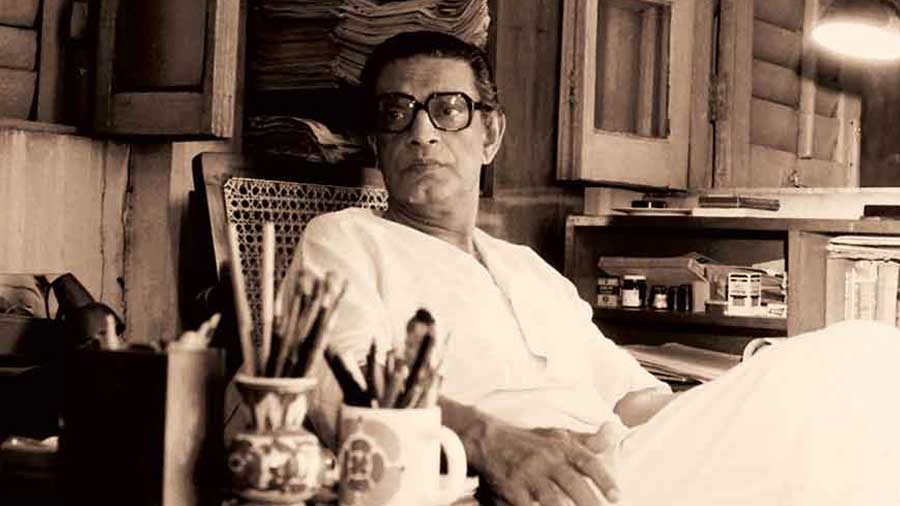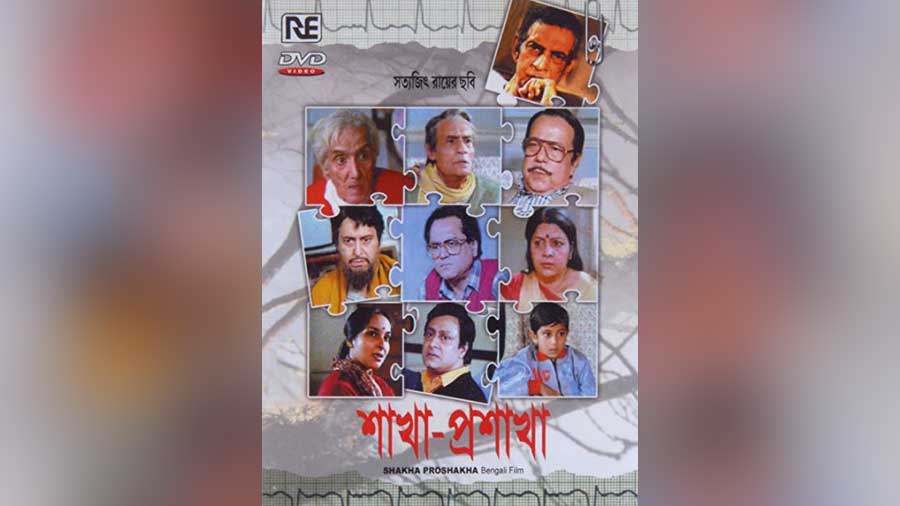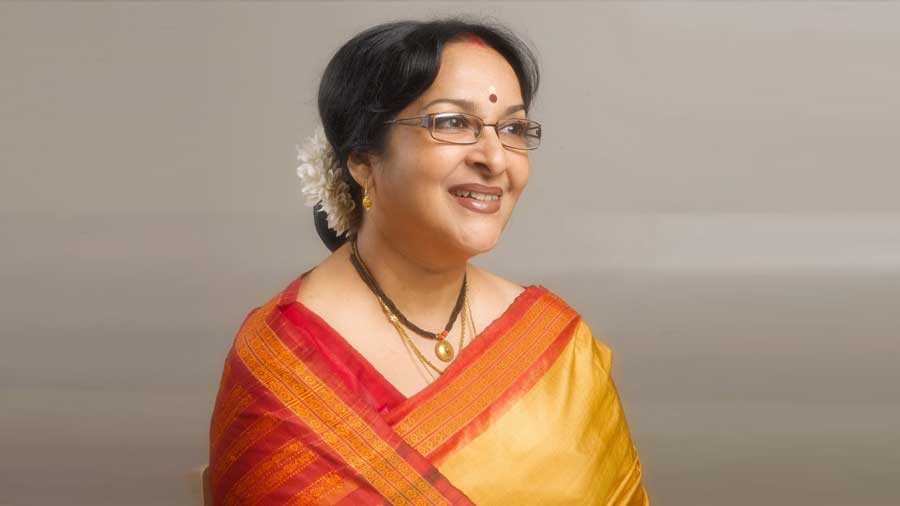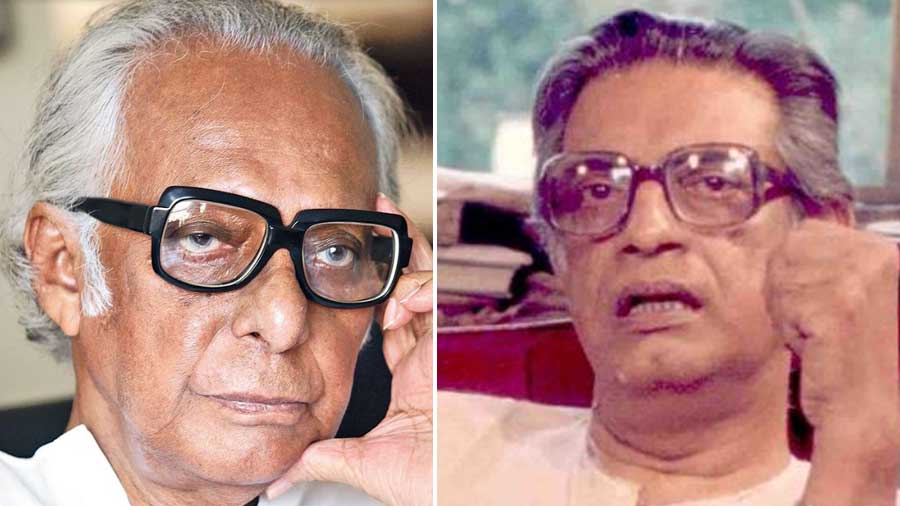If you make a list of the most poignant Bengali films between the 1970s and the 1990s and try to find overlapping connections among them, you are likely to end up with one name. From Mrigayaa (1976) to Oka Oori Kotha (1977), from Ek Din Pratidin (1979) to Kharij (1982), from Ganashatru (1989) to Agantuk (1991), Mamata Shankar has been at the forefront of some of the most nuanced and critically acclaimed films to come out of Tollygunge.
In a career spanning more than four and a half decades, Mamata has won numerous laurels, including a Special Jury honour at the National Awards and two Bengal Film Journalists’ Association (BFJA) awards. But perhaps her most significant prize has been the opportunity to collaborate with two of the finest cinematic storytellers Bengal has produced: Satyajit Ray and Mrinal Sen.
My Kolkata caught up with Mamata at the 2022 Kolkata Literature Festival (KLF) on the grounds of the 45th International Kolkata Book Fair to prize out anecdotes about her first encounter with Ray and get an insight into the similarities and differences between Ray and Sen.
Edited excerpts from the conversation follow.
‘I had no idea what happens during a film shoot’

Both Mithun Chakraborty and Mamata made their acting debuts under Mrinal Sen in ‘Mrigayaa’
My Kolkata: Let us start with your debut film, Mrigayaa, directed by none other than Mrinal Sen. This also happened to be Mithun Chakraborty’s first film. Tell us about your experience with Mrigayaa.
Mamata Shankar: It was a wonderful experience, something I’m carrying with myself till date. Even now, whenever I give the first shot of any film, I feel that I’m giving the first shot of Mrigayaa. I’m still that nervous. Unlike Mithun, who had a film background and was well versed with a film set, I had no idea what happens during a film shoot. But Mrinal da made everything extremely easy and it was beautiful to work with him. I’ve been really lucky to have worked with Mrinal da thereafter in a whole host of films, including Oka Oori Kotha, Ek Din Pratidin and Kharij. I was also supposed to be in Akaler Sandhane (1980), but that didn’t work out, though Smita Patil (who replaced Mamata in the film) did a stellar job.
‘All my sleep went out of the window and my voice started quivering’

Mamata’s first interaction with Satyajit Ray was over a surprise telephone call TT archives
Between 1989 and 1991, you worked in three of Satyaji Ray’s films (Ganashatru, Shakha Proshakha and Agantuk), which actually turned out to be Ray’s last films as a director. What was your first interaction with Ray like? Was it in person or over the phone?
It’s common knowledge that I’m a late riser. And I don’t happen to read newspapers, although my husband is an avid reader. One day (sometime in 1989), while I was sleeping, my husband found out from the papers that Satyajit Ray was going to make a film after five years (his last till then had been Ghare Baire in 1984). On hearing that, I mumbled in my sleep, “If only he’d take me in his film”. A few moments later, my husband came to wake me up with the telephone receiver in his hand and said it’s Satyajit Ray at the other end of the call. I had no clue what was going on but since the phone was ringing, I assumed my husband had unearthed Manik kaka’s number and dialled it himself. Soon enough, I heard that iconic baritone saying “Hello”. All my sleep went out of the window and my voice started quivering. I introduced myself with a lot of trepidation and got straight to the point, since I didn’t want to waste his time. “I’ve heard that you’re making a film again. I’ll be eternally grateful if you could cast me in it, even if it’s in the smallest of roles,” I told Satyajit Ray. He replied by saying that he had already thought about casting me and asked me to get in touch with him a few days later.
Shortly afterwards, I went to meet Manik kaka to confirm if he indeed was going to cast me, since I had a surgery pending and would have to schedule that accordingly. He said he was considering me for two films, but wasn’t sure which one to cast me in yet. The very fact that he told me I was guaranteed to star in either of the films made my day! In the end, I happened to be cast in both, which is how Ganashatru and then Shakha Proshakha happened.
‘Satyajit Ray didn’t have an ego’

Ray took Mamata’s suggestion over his own line for a crucial dialogue in 'Shakha Proshakha'
Is it true that during a scene in Shakha Proshakha (1991), Satyajit Ray asked you to recommend a change in the dialogue?
There was a scene between Ranjit Mallick and myself in Shakha Proshakha that Manik kaka wanted to change, so he had asked me not to read it initially. During the shoot, he’d keep reminding me every day not to read the scene. Then, one fine day, he presented me with a handwritten sheet containing the changed scene. We proceeded to shoot the scene, and Manik kaka was really happy with it, which was evident in how softly he said “cut”, since he didn’t want to spoil the flavour of the scene.

Mamata Shankar is one of a select few to have acted in multiple films directed by Satyajit Ray as well as Mrinal Sen @Mamata Shankar/Facebook
A few days later, Manik kaka called me up and told me that we’d have to reshoot a scene. You can guess which scene he was talking about! I was really sceptical about reshooting because for a scene like that, once you’ve done it already, you tend to get mechanical the second time around.
While the scene was being reshot, Manik kaka pulled a chair right next to him and asked me to sit. I didn’t have the audacity to sit right beside him, so I subtly pulled my chair backwards and sat down. Then he told me that he was perturbed by one of my lines in the scene where I had to say (to Ranjit Mallick): “Three is a crowd, Pratap.” He said that people in the outskirts or in the rural areas wouldn’t understand this line. He wanted me to think of a line that the ordinary viewer could grasp. I was amazed by how this man, whose films were screened in international festivals and graced with the most prestigious awards, was still thinking about the ordinary viewer’s reaction to a line of dialogue.
Finally, I managed to come up with an alternative line, which went something like “Oshob kotha thak, Pratap (let that matter be, Pratap)”. He loved it and readily agreed. That’s when I realised how Satyajit Ray didn’t have an ego.
'They were blessed from above to leave it all in their art'

Sen and Ray had different personalities on set, explains Mamata TT archives
You are one of a select group of people who have acted in films made by Mrinal Sen as well as Satyajit Ray. What were the similarities and differences you found in how these two greats visualised their art and approached filmmaking? And how different were their personalities on set?
Both of them were honest and did what they believed in. Their vision was crystal clear. They said what they wanted to say through their films without compromising. They had an inner conviction, which allowed them to transmit the ideas that they did. They made films thinking not of greatness or success, but of the ordinary person and of humanity as a whole.
A lot of people questioned why Satyajit Ray sang in Agantuk or why Mrinal Sen made certain creative decisions in a film like Kharij. But, for me, they did what they did because they were blessed from above to leave it all in their art.
On set, while the lights would be prepared, Mrinal da had a habit of narrating stories and anecdotes that would teach you a lot, not just about films, but life in general. That way Mrinal da was extremely bubbly. Manik kaka, however, was much quieter between shots and nobody would go up to disturb him. If he wanted to say anything, he’d call us over and communicate his suggestions. But even when Manik kaka would be sitting alone in silence, there was still a lot to learn from him.